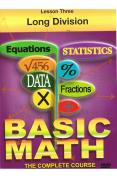 Basic Maths-Long Division | DVD | (23/06/2008)
from £22.98
| Saving you £2.01 (8.00%)
| RRP
Basic Maths-Long Division | DVD | (23/06/2008)
from £22.98
| Saving you £2.01 (8.00%)
| RRP Long Division In this lesson a story example-the magazine delivery problem-is used to develop the universal procedure for a division problem. ""Divide multiply subtract bring down"" is no longer a mantra but has become a well-understood sequence of steps related to a concrete problem. Various types of long-division problems are discussed. They include one-digit divisors two-digit divisors and a zero in the answer. The rationale for why one cannot divide by zero is explained. You Will Learn To make a valid estimate for a division problem. To divide by a one-digit divisor. To divide by a two-digit divisor. Be able to explain why you cannot divide by zero.
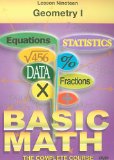 Basic Maths - Geometry Vol.1 | DVD | (22/02/2010)
from £32.37
| Saving you £-12.38 (-61.90%)
| RRP
Basic Maths - Geometry Vol.1 | DVD | (22/02/2010)
from £32.37
| Saving you £-12.38 (-61.90%)
| RRP Award winning mathematics teacher Dr Murray Siegel helps those who struggle to understand mathematics teaching not only the practical methods used in mathematics but the theory behind why these methods work. This volume aims to teach viewers all they need to know about basic geometry discussing the meaning of geometry and the uses it has in everyday life. Dr Siegel discusses the basic geometric shapes and then goes on to cover concepts such as area angles and volume.
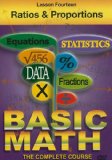 Basic Maths - Ratios And Proportions | DVD | (20/10/2008)
from £32.37
| Saving you £-12.38 (-61.90%)
| RRP
Basic Maths - Ratios And Proportions | DVD | (20/10/2008)
from £32.37
| Saving you £-12.38 (-61.90%)
| RRP Ratios & Proportions: This lesson introduces ratios using three types of problems. First the concept of ratio is investigated and how ratios are related to fractions. Then methods of solving proportions are discussed. The third problem uses proportions to offer an alternative method for solving percentage problems. You Will Learn: 1. To write equivalent ratios. 2. To solve proportions. 3. To explain why cross-multiplying works in solving proportions. 4. To solve percentage problems using proportions.
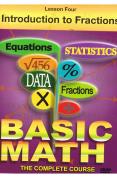 Basic Maths - Dividing Fractions And Review Of Fractions | DVD | (28/07/2008)
from £22.98
| Saving you £-2.99 (-15.00%)
| RRP
Basic Maths - Dividing Fractions And Review Of Fractions | DVD | (28/07/2008)
from £22.98
| Saving you £-2.99 (-15.00%)
| RRP The Basic Math series covers basic math problems from addition subtraction multiplication and division of whole numbers fractions and decimals to percentages ratios and proportions as well as exponents powers intro to geometry graphing number theory and patterns problem solving statistics and simple equations. Why are students not embarrassed when they say ""I can't do math""? You rarely hear from a high school student that ""I can't do history"" or ""I can't do English"" because they can't read. Why do we accept that some students just don't have the aptitude for math while we assume that everyone has the aptitude to read? Basic Math is taught by Murray Siegel of Marietta Georgia. Dr. Siegel holds his doctorate in Mathematics Education and has taught math since 1974. He has received the Presidential Award for Excellence in Mathematic Teaching is designated as a Master Teacher by the Woodrow Wilson National Fellowship Foundation and was named by Kentucky Educational Television as the ""Best Math Teacher in America"". In Dr. Siegel's eyes if you can't ""do math"" you should be just as embarrassed as someone who cannot read. Now there's no need to be embarrassed anymore. This series is the easiest way to become mathematically literate. Dividing Fractions & Review of Fractions: This lesson has two primary objectives. The first is an introduction to the division of fractions. The concept of the reciprocal is developed. Then through a discovery process the method used to divide fractions is investigated. A logical step-by-step process for dividing fractional numbers is presented with a number of examples. The second purpose of this lesson is to review the addition subtraction multiplication and division of fractions. This is a summary of what has been learned in Lessons 4 through 8. You Will Learn: 1. To explain what a reciprocal is and give examples. 2. To explain why zero does not have a reciprocal. 3. To divide fractions. 4. To divide mixed numbers.
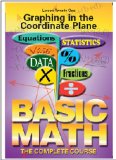 Basic Maths - Measurement | DVD | (23/03/2009)
from £32.37
| Saving you £-12.38 (-61.90%)
| RRP
Basic Maths - Measurement | DVD | (23/03/2009)
from £32.37
| Saving you £-12.38 (-61.90%)
| RRP The Basic Math series covers basic math problems from addition subtraction multiplication and division of whole numbers fractions and decimals to percentages ratios and proportions as well as exponents powers intro to geometry graphing number theory and patterns problem solving statistics and simple equations. Why are students not embarrassed when they say I can't do math? You rarely hear from a high school student that I can't do history or I can't do English because they can't read. Why do we accept that some students just don't have the aptitude for math while we assume that everyone has the aptitude to read? Basic Math is taught by Murray Siegel of Marietta Georgia. Dr. Siegel holds his doctorate in Mathematics Education and has taught math since 1974. He has received the Presidential Award for Excellence in Mathematic Teaching is designated as a Master Teacher by the Woodrow Wilson National Fellowship Foundation and was named by Kentucky Educational Television as the Best Math Teacher in America. In Dr. Siegel's eyes if you can't do math you should be just as embarrassed as someone who cannot read. Now there's no need to be embarrassed anymore. This series is the easiest way to become mathematically literate. This program provides an overview of measurement. The importance of standardizing measurement units is discussed from a historical perspective. The metric system is discussed at length. Measures of distance mass and capacity are discussed. The consistent use of prefixes such as milli- centi- and kilo- are investigated. Measurement of area volume and temperature are presented. Special measurements such as the light year and the acre are discussed. Finally measurement of rates such as miles per hour points per game and beats per minute is You Will Learn To define the meaning of the prefixes milli- centi- and kilo-. To define the meter as the basic unit of length. To define the gram as the basic unit of mass. To define the liter as the basic unit of capacity. To select the appropriate unit to measure the area or volume of common items.
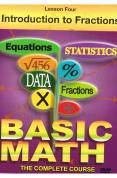 Basic Maths - Multiplying Fractions | DVD | (28/07/2008)
from £32.37
| Saving you £-12.38 (-61.90%)
| RRP
Basic Maths - Multiplying Fractions | DVD | (28/07/2008)
from £32.37
| Saving you £-12.38 (-61.90%)
| RRP The Basic Math series covers basic math problems from addition subtraction multiplication and division of whole numbers fractions and decimals to percentages ratios and proportions as well as exponents powers intro to geometry graphing number theory and patterns problem solving statistics and simple equations. Why are students not embarrassed when they say ""I can't do math""? You rarely hear from a high school student that ""I can't do history"" or ""I can't do English"" because they can't read. Why do we accept that some students just don't have the aptitude for math while we assume that everyone has the aptitude to read? Basic Math is taught by Murray Siegel of Marietta Georgia. Dr. Siegel holds his doctorate in Mathematics Education and has taught math since 1974. He has received the Presidential Award for Excellence in Mathematic Teaching is designated as a Master Teacher by the Woodrow Wilson National Fellowship Foundation and was named by Kentucky Educational Television as the ""Best Math Teacher in America"". In Dr. Siegel's eyes if you can't ""do math"" you should be just as embarrassed as someone who cannot read. Now there's no need to be embarrassed anymore. This series is the easiest way to become mathematically literate. Multiplying Fractions: This lesson shows that multiplication of fractions is related to the multiplication of whole numbers. A rationale for the canceling process is developed. A logical step-by-step process for multiplying mixed numbers is then developed. Various types of fractional multiplication problems are shown as well as multiplication problems involving more than two numbers. You Will Learn: 1. To explain why the canceling process works in multiplication of fractions. 2. To multiply fractions. 3. To multiply mixed numbers. 4. To multiply more than two mixed numbers.
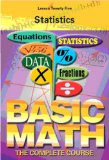 Basic Maths - Statistics | DVD | (22/02/2010)
from £N/A
| Saving you £N/A (N/A%)
| RRP
Basic Maths - Statistics | DVD | (22/02/2010)
from £N/A
| Saving you £N/A (N/A%)
| RRP The Basic Math series covers basic math problems from addition subtraction multiplication and division of whole numbers fractions and decimals to percentages ratios and proportions as well as exponents powers intro to geometry graphing number theory and patterns problem solving statistics and simple equations. Why are students not embarrassed when they say I can't do math? You rarely hear from a high school student that I can't do history or I can't do English because they can't read. Why do we accept that some students just don't have the aptitude for math while we assume that everyone has the aptitude to read? Basic Math is taught by Murray Siegel of Marietta Georgia. Dr. Siegel holds his doctorate in Mathematics Education and has taught math since 1974. He has received the Presidential Award for Excellence in Mathematic Teaching is designated as a Master Teacher by the Woodrow Wilson National Fellowship Foundation and was named by Kentucky Educational Television as the Best Math Teacher in America. In Dr. Siegel's eyes if you can't do math you should be just as embarrassed as someone who cannot read. Now there's no need to be embarrassed anymore. This series is the easiest way to become mathematically literate. Statistics In this lesson we introduce the graphing calculator which has made possible the study of statistics earlier in a student's academic career. Statistics allows the student to see the usefulness of mathematics. Here statistics is introduced using sets of data. The data is analyzed to measure tendency and variation. The concept of outlier is introduced. The box plot a graphic display of data is used to compare sets of data. Qualitative analysis of data is discussed. You Will Learn To find the mean of a set of numbers. To find the median of a set of numbers. Why the median is a better measure of tendency when the data contain extreme values. To compute the range of a set of data.
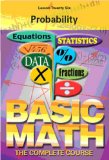 Basic Maths - Probability | DVD | (22/02/2010)
from £N/A
| Saving you £N/A (N/A%)
| RRP
Basic Maths - Probability | DVD | (22/02/2010)
from £N/A
| Saving you £N/A (N/A%)
| RRP The Basic Math series covers basic math problems from addition subtraction multiplication and division of whole numbers fractions and decimals to percentages ratios and proportions as well as exponents powers intro to geometry graphing number theory and patterns problem solving statistics and simple equations. Why are students not embarrassed when they say I can't do math? You rarely hear from a high school student that I can't do history or I can't do English because they can't read. Why do we accept that some students just don't have the aptitude for math while we assume that everyone has the aptitude to read? Basic Math is taught by Murray Siegel of Marietta Georgia. Dr. Siegel holds his doctorate in Mathematics Education and has taught math since 1974. He has received the Presidential Award for Excellence in Mathematic Teaching is designated as a Master Teacher by the Woodrow Wilson National Fellowship Foundation and was named by Kentucky Educational Television as the Best Math Teacher in America. In Dr. Siegel's eyes if you can't do math you should be just as embarrassed as someone who cannot read. Now there's no need to be embarrassed anymore. This series is the easiest way to become mathematically literate. Probability Probability is a subject that demonstrates the importance of understanding fractions decimals and percents. Probability is introduced as a measure of uncertainty or chance. The difference between theoretical probability and experimental probability is explored. Uses of probability in weather reports insurance risk analysis and polls are discussed. Fundamental rules of probability are developed using examples. Words such as independent disjoint and complement are explained in a meaningful context. You Will Learn To define probability as a measure of chance or uncertainty. To enumerate various uses of probability. To define the difference between theoretical and experimental probability. To define disjoint. To define independent events.
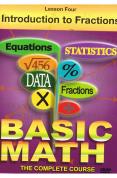 Basic Maths - Introduction To Fractions | DVD | (28/07/2008)
from £16.85
| Saving you £3.14 (15.70%)
| RRP
Basic Maths - Introduction To Fractions | DVD | (28/07/2008)
from £16.85
| Saving you £3.14 (15.70%)
| RRP The Basic Math series covers basic math problems from addition subtraction multiplication and division of whole numbers fractions and decimals to percentages ratios and proportions as well as exponents powers intro to geometry graphing number theory and patterns problem solving statistics and simple equations. Why are students not embarrassed when they say ""I can't do math""? You rarely hear from a high school student that ""I can't do history"" or ""I can't do English"" because they can't read. Why do we accept that some students just don't have the aptitude for math while we assume that everyone has the aptitude to read? Basic Math is taught by Murray Siegel of Marietta Georgia. Dr. Siegel holds his doctorate in Mathematics Education and has taught math since 1974. He has received the Presidential Award for Excellence in Mathematic Teaching is designated as a Master Teacher by the Woodrow Wilson National Fellowship Foundation and was named by Kentucky Educational Television as the ""Best Math Teacher in America"". In Dr. Siegel's eyes if you can't ""do math"" you should be just as embarrassed as someone who cannot read. Now there's no need to be embarrassed anymore. This series is the easiest way to become mathematically literate. Introduction To Fractions: Many students are frustrated by fractions. Basic Math introduces the fraction with concrete examples. The structure of the fraction-numerator and denominator-is related to the whole number. Fundamental fractional operations such as equivalent fractions reducing simplifying and writing a mixed number as an improper fraction are introduced. These operations are vital if one is to successfully compute with fractional numbers. You Will Learn: 1. To define the numerator of a fraction as its ""digit"" and the denominator as its ""place value"". 2. To compute equivalent fractions. 3. To reduce fractions to lowest terms. 4. To simplify an improper fraction to a mixed number. 5. To convert a mixed number to an improper fraction.
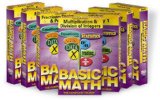 Basic Maths - Problem-Solving Techniques | DVD | (23/03/2009)
from £N/A
| Saving you £N/A (N/A%)
| RRP
Basic Maths - Problem-Solving Techniques | DVD | (23/03/2009)
from £N/A
| Saving you £N/A (N/A%)
| RRP The Basic Math series covers basic math problems from addition subtraction multiplication and division of whole numbers fractions and decimals to percentages ratios and proportions as well as exponents powers intro to geometry graphing number theory and patterns problem solving statistics and simple equations. Why are students not embarrassed when they say I can't do math? You rarely hear from a high school student that I can't do history or I can't do English because they can't read. Why do we accept that some students just don't have the aptitude for math while we assume that everyone has the aptitude to read? Basic Math is taught by Murray Siegel of Marietta Georgia. Dr. Siegel holds his doctorate in Mathematics Education and has taught math since 1974. He has received the Presidential Award for Excellence in Mathematic Teaching is designated as a Master Teacher by the Woodrow Wilson National Fellowship Foundation and was named by Kentucky Educational Television as the Best Math Teacher in America. In Dr. Siegel's eyes if you can't do math you should be just as embarrassed as someone who cannot read. Now there's no need to be embarrassed anymore. This series is the easiest way to become mathematically literate. PROBLEM-SOLVING TECHNIQUES This lesson introduces problem-solving techniques now that you have all the necessary concepts and methods to tackle nonstandard problems. Problems are presented that allow you to use a chart simplify a problem by reducing its size and expanded visualization of a problem. The key concept of this program is to recognize that rather than memorize specific algorithms (or methods) for each type of problem; an effective problem-solver has some techniques that can be applied to a variety of problems. You Will Learn: To use a chart to help solve a problem. To make a problem smaller or simpler to help solve it. To expand the limits of visualization to solve a problem. Valid problem-solving techniques in an attempt to solve a given problem.
 Basic Maths - Adding Fractions | DVD | (22/02/2010)
from £26.98
| Saving you £-6.99 (-35.00%)
| RRP
Basic Maths - Adding Fractions | DVD | (22/02/2010)
from £26.98
| Saving you £-6.99 (-35.00%)
| RRP The Basic Math series covers basic math problems from addition subtraction multiplication and division of whole numbers fractions and decimals to percentages ratios and proportions as well as exponents powers intro to geometry graphing number theory and patterns problem solving statistics and simple equations. Why are students not embarrassed when they say ""I can't do math""? You rarely hear from a high school student that ""I can't do history"" or ""I can't do English"" because they can't read. Why do we accept that some students just don't have the aptitude for math while we assume that everyone has the aptitude to read? Basic Math is taught by Murray Siegel of Marietta Georgia. Dr. Siegel holds his doctorate in Mathematics Education and has taught math since 1974. He has received the Presidential Award for Excellence in Mathematic Teaching is designated as a Master Teacher by the Woodrow Wilson National Fellowship Foundation and was named by Kentucky Educational Television as the ""Best Math Teacher in America"". In Dr. Siegel's eyes if you can't ""do math"" you should be just as embarrassed as someone who cannot read. Now there's no need to be embarrassed anymore. This series is the easiest way to become mathematically literate. Adding Fractions: In this lesson we discover that addition of fractions is related to the addition of whole numbers. Addition of fractions with like denominators and then addition of those with unlike denominators are accomplished. Writing the answers in simplest terms is discussed. What has been learned about adding fractions is applied to adding mixed numbers. A logical step-by-step process is developed. You Will Learn: 1. To add fractions with like denominators. 2. To add fractions with unlike denominators. 3. To convert fractional answers to simplest terms. 4. To add mixed numbers.
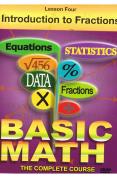 Basic Maths - Subtracting Fractions | DVD | (28/07/2008)
from £32.37
| Saving you £-12.38 (-61.90%)
| RRP
Basic Maths - Subtracting Fractions | DVD | (28/07/2008)
from £32.37
| Saving you £-12.38 (-61.90%)
| RRP The Basic Math series covers basic math problems from addition subtraction multiplication and division of whole numbers fractions and decimals to percentages ratios and proportions as well as exponents powers intro to geometry graphing number theory and patterns problem solving statistics and simple equations. Why are students not embarrassed when they say ""I can't do math""? You rarely hear from a high school student that ""I can't do history"" or ""I can't do English"" because they can't read. Why do we accept that some students just don't have the aptitude for math while we assume that everyone has the aptitude to read? Basic Math is taught by Murray Siegel of Marietta Georgia. Dr. Siegel holds his doctorate in Mathematics Education and has taught math since 1974. He has received the Presidential Award for Excellence in Mathematic Teaching is designated as a Master Teacher by the Woodrow Wilson National Fellowship Foundation and was named by Kentucky Educational Television as the ""Best Math Teacher in America"". In Dr. Siegel's eyes if you can't ""do math"" you should be just as embarrassed as someone who cannot read. Now there's no need to be embarrassed anymore. This series is the easiest way to become mathematically literate. Subtracting Fractions: This lesson shows that subtraction of fractions is related to the subtraction of whole numbers. The borrowing process is introduced with a story that gives a concrete picture of what one is doing when borrowing in a fractional subtraction exercise. A logical step-by-step process is developed to subtract mixed numbers. Special cases involving a mixed number minus a whole number and a whole number minus a mixed number are investigated. You Will Learn: 1. To subtract fractions. 2. To subtract mixed numbers. 3. To borrow when needed for the subtraction of mixed numbers. 4. To subtract a whole number from a mixed number. 5. To subtract a mixed number from a whole number.
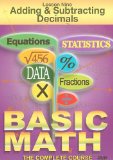 Basic Maths - Adding And Subtracting Decimals | DVD | (18/08/2008)
from £32.37
| Saving you £-12.38 (-61.90%)
| RRP
Basic Maths - Adding And Subtracting Decimals | DVD | (18/08/2008)
from £32.37
| Saving you £-12.38 (-61.90%)
| RRP 
Please wait. Loading...
This site uses cookies.
More details in our privacy policy